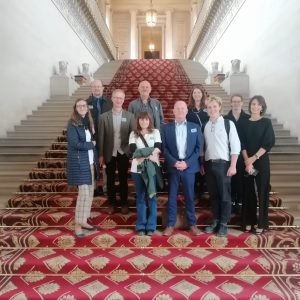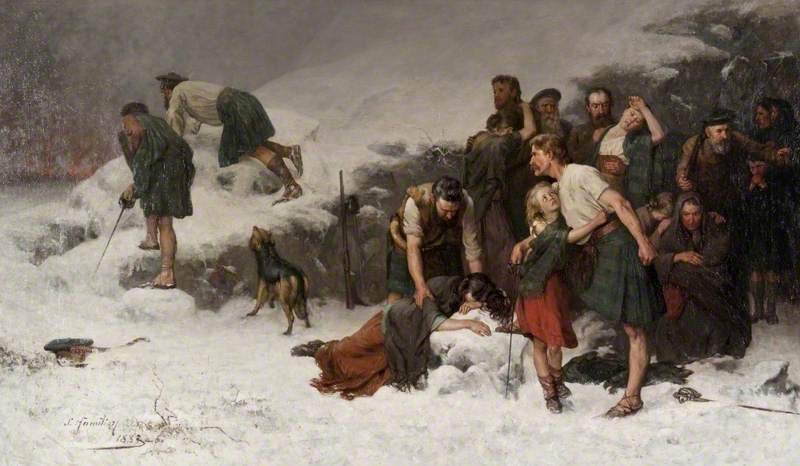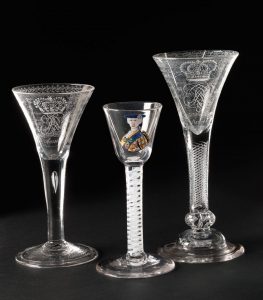Recently, the entire project team travelled to Paris and participated in the 74th ICHRPI (International Commission for the History of Representative and Parliamentary Institutions) Conference, which was held between the magnificent Assemblée Nationale and the beautiful Conseil d’État. It was a great privilege to present our work at these amazing government venues and to be addressed by Yaël Braun-Pivet, President of the Assemblée Nationale. Some of us were also treated to a tour of the Sénatand we share our thanks with the organisers.

Although all presenting on different topics, a clear common theme emerged from our panel: Scottish instability following the revolution of 1688-1690 and how the Privy Council records that our project will make available to all have the potential to transform our understanding of this uncertain period. As Project Manager Allan Kennedy later tweeted, this moment of upheaval “was far more enduringly traumatic for Scotland than most scholars have realised.” In this context, Kennedy’s paper then considered the efforts of governments under William, Mary, and Anne to control disorder in the Highlands. Meanwhile, Research Fellow ClareLoughlin spoke on privy councillors’ struggles to deal with the religious tensions and divisions created by the ecclesiastical re-settlement and PhD student Robbie Tree explored some of the Council’s attempts at favourably managing local burgh elections in towns left divided in the revolution’s wake. As PhD student Susanne Weston’s presentation on petitions demonstrated, the Privy Council lay at the forefront of interaction between those in authority and ordinary Scottish people. Councillors would have experienced the lurking sense of post-revolution insecurity first hand.
Chaired by our Co-Investigator, Alan Mcdonald, our panel then concluded with a paper from Primary Investigator Alastair Mann, who provocatively asked whether disparaging comments made by some historians on the demise of the Scottish Parliament in 1707 might have been equally applied to that of the United Kingdom if Incorporating Union had been repealed in 1713, when a vote on the issue at Westminster was defeated by just four votes. This narrow margin, perhaps above all, provides a clear illustration of continued turbulence.

In my own paper, I explored public outbursts of Jacobite sentiment during seditious celebrations of the ‘true’ monarch’s birthday. Expressed through bonfires and boozy ‘health toasting’ at the Mercat cross, such demonstrations became a key way to stage continued resistance to the post-revolution regime.

One example of how the occasion could become a showcase for Scottish instability occurred on 14 October 1691, the birthday of King James VII, who had been ousted during the revolution. As you can see from the map, demonstrations on this date were widespread, suggesting that the government faced a serious problem. But, by its very nature, this ‘health drinking’ was also difficult to police, with many accused participants claiming to have been there “in drink, rather than by design”.[1] On this date at Dundee, for example, a periwig maker named Peter Chrystie was alleged to have publically drunk the ‘Late’ King James’ health whilst also trying to force several others to do the same. However, petitioning the Council several long, incarcerated months’ later, Chrystie pleaded that “the trueth is thee petitioner knowes not perfectly what passed For… he was at that tyme overtaken by drink and fell foull with his Companions to the hazard of being strangled in his oune Cravat…”[2] Further north at Fraserburgh, Aberdeenshire, the young Charles Lord Frazer also claimed to have been similarly led astray after drinking “to excess” with his friends. However, the facts that another present also “proclaimed” James as their “Righteous King” and that Frazer would later participate in the 1715 Jacobite Rising perhaps suggests that the wayward lord had not been inspired to take part purely by the wine.[3]
The crowd that chose to drink James’ health at Dalkeith, near Edinburgh, certainly couldn’t claim spontaneity or intoxication. Here, a group including Mr Thomas Dobie, reader to the minister, John Gaskett, sadler, and Andrew Logan, shoemaker, carried with them not only enough wood for a bonfire but an actual table to set up their drinking glasses. Arriving at the Mercat cross they “did thereat drink the Late King James his health upon their knees” and – just for good measure – they also than drank “the confusione” of William, Mary, all Presbyterians, and “all the bairns in the States of Holland”.[4]
As amusing as such incidents are what do they mean for our understanding of Scotland in the early 1690s? Just as with so many of the other papers on the Scottish Privy Council Project’s conference panel, these carnivalesque moments of conflict illustrate how Scots were split by the 1689-1690 Revolution. Providing online access to the Acta and Decreeta of the period from 1692-1708, our project will help researchers tease out the impact of these divisions.
Dr Laura Doak (Research Fellow)
[1] NRS, PC1/49, p.347.
[2] NRS, PC1/48, pp.9-10.
[3] ibid, p.436.
[4] ibid, p.459.
